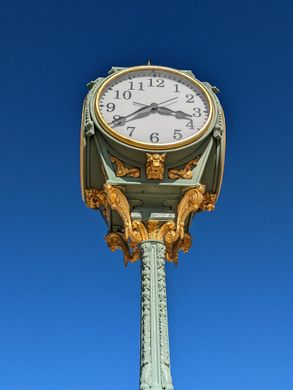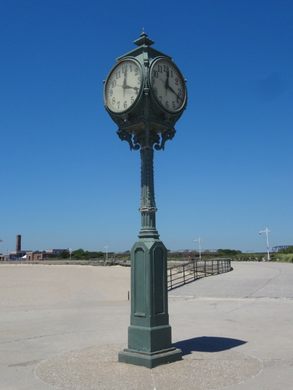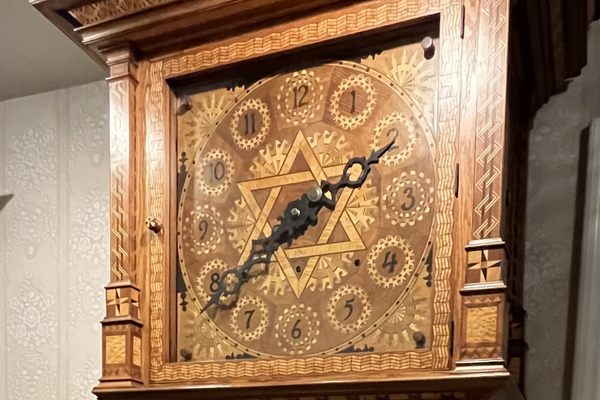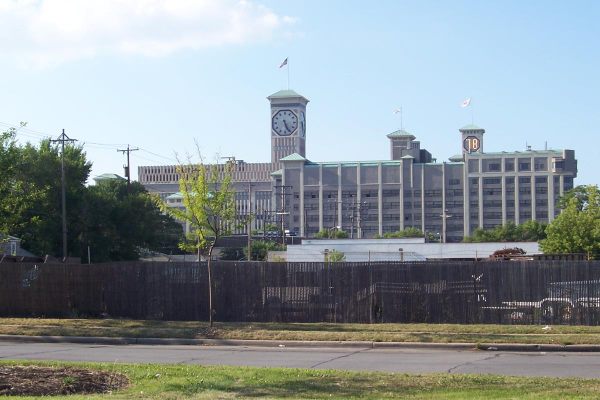Wise Clock (Riis Park Memorial Clock)
This 19th-century clock has been restored to help withstand the harsh environment of its seaside home.
On the boardwalk at the east end of the Riis Park main beach, you can find one of the few freestanding street clocks remaining in New York City. Known as the Wise Clock or Riis Park Memorial Clock, this timepiece has had a number of homes before it came to this coastal location.
The clock was built by the Howard Clock Company in Boston in 1891. Originally, the clock stood in front of the Brooklyn jewelry store William A. Wise and Son on Flatbush Avenue and Nevins Street. The company then moved it to a new location near Hoyt on Fulton Street, where it remained for nine years. After that, it was moved once more, this time to 288 Livingston, where it remained for about five years before being moved to the park. When William A. Wise and Son went out of business in 1941, they gave the clock to the Department of Parks. It was included in the National Register of Historic Places in 1981.
This clock was originally driven by a single mechanism and had four faces. Four distinct mechanisms were added during the 1970s renovations. The clock’s base was made of cast iron, and wood extended from the top of the pedestal. The standard was approximately 20 feet tall and had a height of 12 feet. The clock had four faces, each with a diameter of four feet, and a dial with a diameter of 30 inches. The clock’s pedestal was adorned with intricate scrollwork. In September 1941, a bronze weather vane depicting a sailor looking through a spyglass was installed on top.
Over time, the salty sea air led to a number of rusted parts. The clock was painted multiple times and over time many of its gilded details, including corbels and acanthus leaves, were lost. Additionally, the clock had lost its ability to accurately display the time.
In 2018, the Wise Clock was moved to the Kreilick Studio in Oreland, Pennsylvania, for restoration. New, rust-resistant fasteners were used in place of corroded screws, bolts, and fasteners. All of the exterior ornamental metal elements that were missing were verified, and re-cast to match the original clock. The clockworks were rebuilt to guarantee time accuracy and minimize the need for future maintenance. all of the parts were treated with special paint that is resistant to scratching from blowing sand, salt water, and other environmental factors. Strings of miniature LED lights were attached to the internal rim of the clock to provide internal illumination. After seven months of conservation work, the clock was returned to its original location on June 5, 2019.
















Follow us on Twitter to get the latest on the world's hidden wonders.
Like us on Facebook to get the latest on the world's hidden wonders.
Follow us on Twitter Like us on Facebook